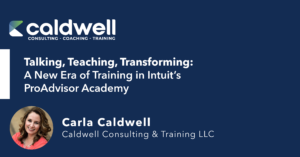The Power of Process
Each day we do things without thinking- driving to work, performing routine tasks, or cooking dinner. We know the steps and are almost on auto-pilot. It is even true of harder tasks, even at work, like closing out a month or doing (parts of) a tax return. Of course we are thinking (I DO think it takes a genius to do tax returns!), but the steps are almost second nature…until they aren’t. A new rule, law or regulation changes things. There is a nuance to a client or there is a problem with the software, and now our routine is broken, tasks get missed, and work starts to stack up.
For both accounting firms and small business clients, there is power in documenting your processes. When you see things put on paper, new ideas emerge and improvements can be made. Specifically, there are several things that I have seen happen when you take the time to write the steps down:
- You actually stop and slow down to work on your business. This alone is helpful. People often think of ideas and solutions just by having the time set aside from the busy-ness to think through the steps and procedures necessary to complete tasks and projects.
- When you start writing each step in the process, you’ll see where the gaps are. Why don’t we do Y instead of X? As you see the steps, you may see redundancy or inefficiency. You may notice that there is a logical next step you never saw or considered before.
- When you involve other members of your team, you will get ideas and learn of issues that as leaders you often don’t even see. An intentional time to review processes (not a gripe session!) allows a format for receiving insight into areas of the business that often are neglected by the activity of running the business.
- You see strengths of your team members you didn’t know they had. Some will be shy, but others will surprise you.
After your meeting, document all the ideas as soon as possible, distribute to the team and get additional feedback. Many times people will think of ideas after the meeting, or after seeing the entire process will notice improvements or have additional ideas. Take note of who is engaged in this process as well. If a team member is disengaged, this needs to be addressed very quickly. Lastly, be sure to begin implementing those ideas right away to keep the momentum going, and give credit to those who shared ideas, and especially to those whose ideas are implemented.
Proverbs says “where there is no guidance people fall.” Guide your team to document their processes, look for gaps and then collaborate on solutions. This is an exciting time in your organization, and seeing positive change will encourage and energize your team.



